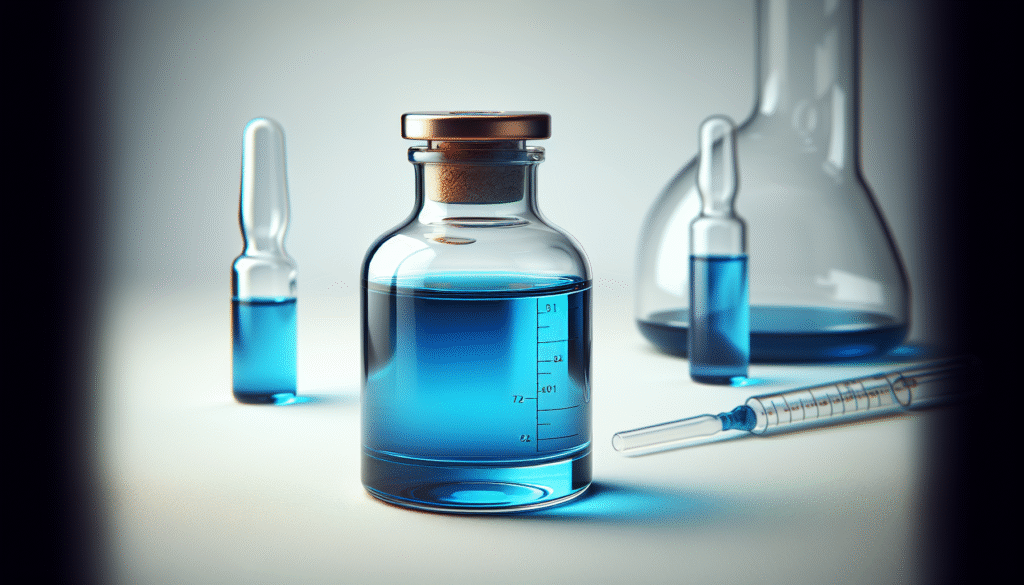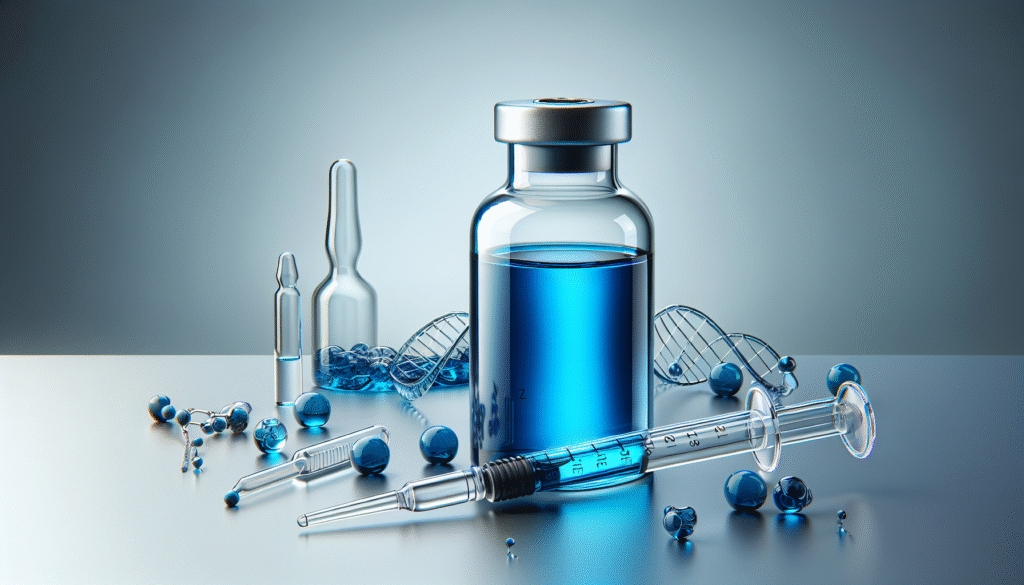
What do you know about Methylene Blue and its various applications? If you are seeking clarity regarding this compound, you are not alone. Many people have questions about Methylene Blue, ranging from its medicinal uses to its effectiveness as a dye. Let’s navigate through the most frequently asked questions concerning this intriguing substance.

What is Methylene Blue?
Methylene Blue is a synthetic dye that has been utilized for over a century in various fields, including medicine, biology, and chemistry. Originally developed as a textile dye, it has found significance in both therapeutic and diagnostic contexts. The compound’s chemical composition consists of a thiazine ring and its structure contributes to its various properties.
Chemical Composition and Structure
The molecular formula of Methylene Blue is C16H18ClN3S, which indicates that it contains carbon, hydrogen, chlorine, nitrogen, and sulfur. The unique structure of Methylene Blue allows it to absorb and emit light in specific wavelengths, leading to its applications in biological staining and other scientific uses.
History and Development
Methylene Blue was first synthesized in 1876 by Heinrich Caro. Initially intended for dyeing textiles, its medicinal properties were discovered shortly thereafter. Over the decades, Methylene Blue has been researched extensively, leading to its recognition as a treatment for conditions like methemoglobinemia and its usage in various laboratory contexts.
How is Methylene Blue Used in Medicine?
Methylene Blue’s applications in the medical field are diverse and noteworthy.
Treatment of Methemoglobinemia
One of the primary uses of Methylene Blue is in the treatment of methemoglobinemia, a condition where hemoglobin is altered such that it cannot effectively carry oxygen. When administered, Methylene Blue acts as a reducing agent, helping to convert methemoglobin back to the normal form of hemoglobin.
Dosage and Administration
The standard dosage for adults is typically 1 to 2 mg/kg administered intravenously. However, it is crucial to consult with a healthcare professional for proper dosing and administration guidelines.
Antidote for Certain Poisonings
Methylene Blue can also serve as an antidote for certain types of poisonings, particularly those caused by compounds that lead to methemoglobin formation, such as nitrites. Its effectiveness is largely dependent on the timing of administration and the amount of toxin involved.
Other Medical Uses
Beyond these primary applications, Methylene Blue has been studied for its potential benefits in treating conditions like urinary incontinence, certain types of infections, and even cognitive disorders. Some recent studies suggest potential neuroprotective properties, but additional research is needed for conclusive evidence.
What Are the Side Effects of Methylene Blue?
As with any medical treatment, using Methylene Blue can carry risks, and it is important for you to be informed about its potential side effects.
Common Side Effects
- Skin Reactions: Some individuals may experience an allergic reaction that manifests as skin rashes or itching.
- Gastrointestinal Disturbance: Nausea, vomiting, and diarrhea are common side effects that have been reported.
- Urine Discoloration: A harmless side effect, Methylene Blue can turn urine and feces a blue-green color, which may lead to unwarranted alarm.
Serious Side Effects
While rare, serious side effects can occur. These might include:
- Serotonin Syndrome: When taken in conjunction with certain antidepressants, Methylene Blue can precipitate this potentially life-threatening condition characterized by confusion, rapid heart rate, and high blood pressure.
- Hemolytic Anemia: Those with G6PD deficiency face a higher risk of developing hemolytic anemia, a condition where red blood cells are destroyed faster than they can be produced.
When to Seek Medical Attention
It is vital to consult a healthcare provider if you experience any unusual symptoms following Methylene Blue administration. This includes severe allergic reactions or symptoms of serotonin syndrome.
How is Methylene Blue Used in Laboratory Settings?
Beyond the clinical realm, Methylene Blue is a powerful agent in laboratory contexts.
Biological Staining
In microbiology, Methylene Blue is widely used as a biological stain. It helps visualize cellular structures, particularly in observing the morphology of bacteria.
Applications in Microscopy
When preparing slides for microscopy, Methylene Blue can highlight specific cellular components, making it easier to identify different microorganisms and assess their viability.
Redox Indicator
In analytical chemistry, Methylene Blue serves as a redox indicator. Its ability to exist in both oxidized (blue) and reduced (colorless) states allows it to signal the status of a redox reaction, enabling scientists to monitor chemical processes effectively.
Potential Applications in Research
Researchers have also examined Methylene Blue for its potential applications in photodynamic therapy for cancer treatment, as well as its role as an antibacterial and antiviral agent. Ongoing research remains critical in expanding our understanding of its capabilities.

Can Methylene Blue Be Used as a Dietary Supplement?
The emergence of Methylene Blue as a potential dietary supplement has generated considerable interest in recent years. However, it is essential to approach this subject with care.
Claims and Benefits
Some advocates claim that Methylene Blue can enhance cognitive function, improve memory, and even provide anti-aging effects. These claims are largely anecdotal and require rigorous scientific validation.
Safety and Efficacy
At present, Methylene Blue is not recognized as a dietary supplement by major health organizations, and its long-term effects on health are not well understood. If you are considering using it in this manner, discussing it with a healthcare provider is imperative.
Is Methylene Blue Safe for Pets?
Methylene Blue’s veterinary applications are another area of interest. However, the nuances of its usage with animals should be well-understood.
Applications in Veterinary Medicine
In veterinary settings, Methylene Blue has been used to treat cases of methemoglobinemia in pets, particularly dogs and cats. It is sometimes administered when animals are exposed to nitrite-poisoning sources such as certain fertilizers.
Recommended Dosage
Administering Methylene Blue to pets should always be supervised by a veterinarian. They can recommend appropriate dosages and monitor for potential side effects.
Potential Risks
Similar to humans, pets can experience side effects ranging from gastrointestinal upset to more serious complications. If your pet receives Methylene Blue treatment, close monitoring for any signs of distress is advisable.
How Can You Purchase Methylene Blue?
Acquiring Methylene Blue can vary based on its intended use, and understanding where to obtain it requires some diligence.
Prescription and Over-the-Counter Availability
In many countries, Methylene Blue is available by prescription for medicinal purposes, while certain concentrations may be available over the counter as dye. It is crucial to ensure you are purchasing from reputable sources to guarantee product safety and quality.
Online Purchasing
Many users choose to buy Methylene Blue online. However, if you opt for this route, ensure that you are purchasing from established and recognized suppliers to avoid counterfeit products.
Laboratory Reagents
For laboratory purposes, Methylene Blue may be purchased from chemical suppliers catering to educational and research institutions. When purchasing reagent-grade substances, ensure they meet quality standards.
What Should You Know Before Using Methylene Blue?
Understanding the implications of using Methylene Blue is essential for safety and efficacy.
Consultation with Healthcare Professionals
Before starting Methylene Blue for any reason, it is advisable to consult with a healthcare provider to assess its appropriateness for your situation and to discuss any potential interactions with existing medications.
Possible Drug Interactions
Methylene Blue can interact with several medications, particularly those that affect serotonin levels. Always provide your healthcare provider with a complete list of your current medications to avoid dangerous interactions.
Monitoring and Follow-Up
If you are prescribed Methylene Blue, regular follow-ups may be necessary to monitor for side effects, efficacy, and overall health status. Open communication with your healthcare provider ensures that any concerns can be addressed promptly.
Conclusion
The complexity surrounding Methylene Blue is significant, ranging from its historical origins to its modern applications in medicine and research. As you consider its uses, benefits, and potential risks, an informed approach is essential. Staying engaged with professional guidance and updated research will empower you to make educated decisions regarding Methylene Blue, whether for personal health or professional use.
Through ongoing education and dialogue within the medical community, Methylene Blue’s full range of capabilities can be explored and harnessed effectively, ensuring safe and beneficial outcomes. Adopting proactive measures and consultation will enhance your experience and understanding of this multifaceted compound, ensuring that its vast potential is understood and utilized safely.